Related Research Articles

Crash is a novel by English author J. G. Ballard, first published in 1973. It is a story about symphorophilia; specifically car-crash sexual fetishism: its protagonists become sexually aroused by staging and participating in real car-crashes.
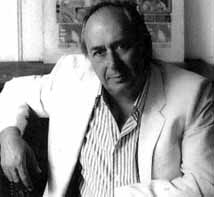
James Graham Ballard was an English novelist, short story writer, satirist, and essayist who first became associated with the New Wave of science fiction for his post-apocalyptic novels such as The Drowned World (1962). In the late 1960s, he produced a variety of experimental short stories, such as those collected in the controversial The Atrocity Exhibition (1970). In the mid 1970s, Ballard published several novels, among them the highly controversial Crash (1973), a story about symphorophilia and car crash fetishism, and High-Rise (1975), a depiction of a luxury apartment building's descent into violent chaos.

The Wall by Jean-Paul Sartre, a collection of short stories published in 1939 containing the eponymous story "The Wall", is considered one of the author's greatest existentialist works of fiction. Sartre dedicated the book to his companion Olga Kosakiewicz, a former student of Simone de Beauvoir.
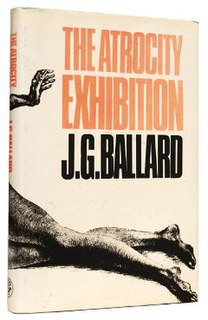
The Atrocity Exhibition is an experimental novel of linked stories or "condensed novels" by British writer J. G. Ballard.
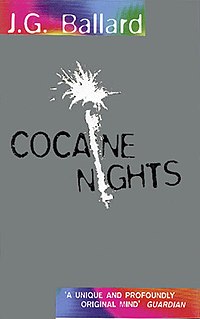
Cocaine Nights is a 1996 novel by J. G. Ballard. Like Super-Cannes that followed it, it deals with the idea of dystopian resort communities which maintain their seemingly perfect balance via a number of dark secrets.
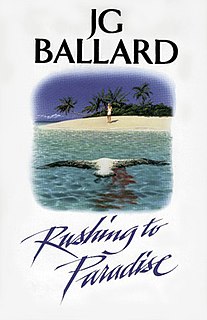
Rushing to Paradise is a novel by British author J. G. Ballard, first published in 1994.
Malcolm "Mal" Reynolds is a fictional character and the protagonist of the Firefly franchise. Mal is played by actor Nathan Fillion in the 2002 TV series Firefly and the 2005 film Serenity. In the series, Mal is a former Browncoat sergeant and the captain of the "Firefly-class" spaceship Serenity. The character was named #18 in TV Guide's Greatest Sci-Fi Legends list in 2004.

Eden: It's an Endless World! is a science fiction manga by Japanese artist Hiroki Endo, published monthly in the Japanese magazine Monthly Afternoon. It is published in the United States by Dark Horse Comics, in the United Kingdom by Titan Books, and in Germany by Egmont Manga & Anime. Eden is set in the near future, following a pandemic called closure virus which killed 15 percent of the world's population, crippled or disfigured many more, and upset the world's political balance greatly. Eden is to some extent based on Gnostic mythology, with some characters, such as Ennoia, being named after Gnostic entities, and other Gnostic influences being seen in the themes of the ongoing story.

Myths of the Near Future is a collection of science fiction short stories by British writer J. G. Ballard, first published in 1982.

Books of Blood is a series of six horror fiction anthologies collecting original stories written by British author, playwright, and filmmaker Clive Barker in 1984 and 1985. Known primarily for writing stage plays beforehand, Barker gained a wider audience and fanbase through this anthology series, leading to a successful career as a novelist. Originally presented as six volumes, the anthologies were subsequently re-published in two omnibus editions containing three volumes each. Each volume contains four or five stories. The Volume 1–3 omnibus contained a foreword by Barker's fellow Liverpudlian horror writer Ramsey Campbell. Author Stephen King praised Books of Blood, leading to a quote from him appearing on the first US edition of the book: "I have seen the future of horror and his name is Clive Barker."
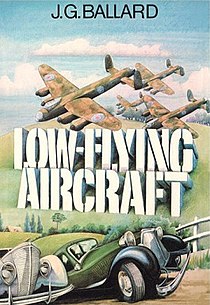
Low-Flying Aircraft and Other Stories is a collection of science fiction short stories by British writer J. G. Ballard published in 1976.
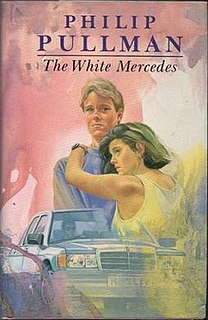
The White Mercedes, published in 1992 and now known as The Butterfly Tattoo, is about one character who falls passionately in love, and suffers horribly from then on, as his innocent love is embroiled in a long cycle of revenge and hatred. It was Philip Pullman's first book for younger audiences, which won him critical acclaim from many sources.
"Venus Smiles" is a short story by British author J. G. Ballard. Originally titled "Mobile", it appeared in the June 1957 edition of Science Fantasy. It was then rewritten and appeared in the Vermilion Sands (1971) collection under its new name and later The Complete Short Stories of J. G. Ballard (2006).
"Track 12" is a short story by British author J. G. Ballard, it first appeared in the April 1958 edition of New Worlds. It then appeared in Passport to Eternity, The Venus Hunters, The Overloaded Man, and later in The Complete Short Stories of J. G. Ballard: Volume 1.
"Deep End" is a short story written in 1961 by British author J. G. Ballard. It first appeared in the May 1961 edition of New Worlds and then in the 1962 collection The Voices of Time and Other Stories followed by The Complete Short Stories of J. G. Ballard: Volume 1 in 2006. The tale is typical of Ballard's dystopian science fiction.
"Mr F. is Mr F." is a short story by British author J. G. Ballard. It first appeared in the August 1961 edition of Science Fantasy. It was later reprinted in The Disaster Area (1967), and then in the larger The Complete Short Stories of J. G. Ballard: Volume 1 anthology (2006).
Cavale is a 2002 film directed by, written by, and starring Lucas Belvaux.
"Minus One" is a short story by British author J. G. Ballard; it was first published in the June 1963 edition of Science Fantasy. It was later reprinted in the 1967 collection The Disaster Area, and then later in the larger The Complete Short Stories of J. G. Ballard: Volume 1 anthology (2006).
Buster Bayliss is a series of books written by British author Philip Reeve, intended for younger readers. The main character of the series is Buster Bayliss. In the stories, Buster must stop someone or something taking over the world. The catchphrase which often appears on the cover of the books is where's there's trouble, there's Buster Bayliss. So far there are four books.
"The Lying Detective" is the second episode of the fourth series of the British television series Sherlock and the twelfth episode overall. The episode was first broadcast on BBC One, BBC First, PBS and Channel One on 8 January 2017.
References
- ↑ "JG Ballard Book Cover Scans: 1960-61". The Terminal Collection. Retrieved January 6, 2009.
- ↑ "JG Ballard Book Cover Scans: 1962-63". The Terminal Collection. Retrieved January 6, 2009.